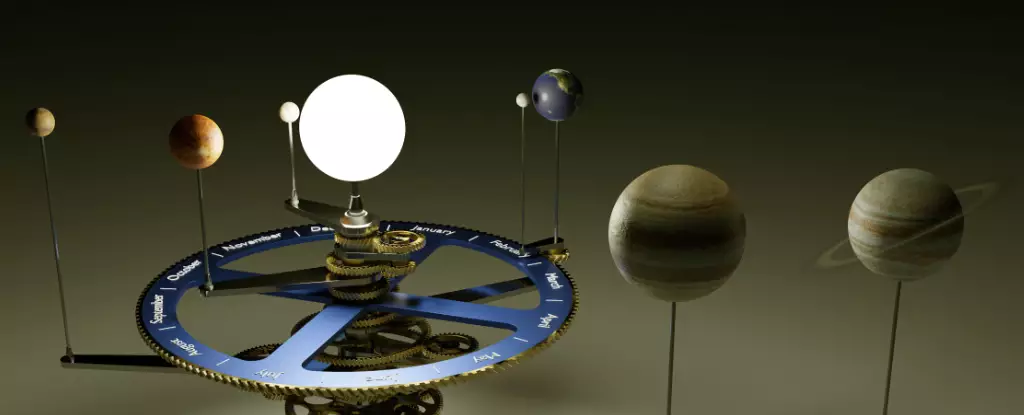The beauty of astronomy lies in its ability to bring people together under the vast, starry sky. This celestial connection often becomes especially vibrant when rare astronomical events occur. In February and early March 2025, sky enthusiasts will be presented with a spectacular chance to witness not just one, but all of the naked-eye planets aligning in an unprecedented display. While such occasions are uncommon, the factors that contribute to this rarity create fascinating narratives, scientific insights, and unforgettable experiences for avid stargazers.
For the first time in over a year, the playground of planets in our Solar System will be visible all at once to naked-eye observers. While Venus, Mars, Jupiter, and Saturn are commonly spotted in the firmament, the presence of the elusive Mercury completes the planetary menagerie, beckoning enthusiasts to venture outdoors. Mercury’s visibility is notably fleeting as it orbits closest to the Sun, and its appearance in the night sky is often ephemeral. As a result, February and March are crucial moments for amateurs and seasoned astronomers alike to be equipped with binoculars and keen eyes to detect these celestial bodies.
During this period, Mercury will first make its reappearance just after sunset, marking an essential transition for both seasoned observers and new stargazers. The alignment of celestial bodies, including the distinctive crescent moon, offers an engaging storyline that enhances the experience of watching the sky at dusk. With proper guidance from the brilliant Venus, spotting Mercury becomes a tangible goal for many who have dreamt of adding this elusive planet to their astronomical roster.
Leading the pack is the brilliant Venus, shining brightly at magnitude -4.2, drawing the interest of skywatchers with its obvious brilliance. Known commonly as the “Evening Star,” Venus has been a guiding light for countless cultures throughout history. It serves as a benchmark for finding other planets during these fleeting weeks. After Mercury’s conjunction with the Sun, it will make its presence known, lying just 1.5 degrees north of Saturn’s path on February 25th. The crescent Moon will add an interesting twist to the visibility of these planets, occluding Mercury on March 1st for viewers in Hawaii and parts of the Pacific. Such phenomena remind observers of how interconnected celestial mechanics can be.
Mars, which recently celebrated its opposition on January 16th, stands ready and bright at -0.58 magnitude in Gemini. This accessible planet greets skywatchers high to the east at dusk, anchoring its place in the celestial narrative while fostering excitement about future missions, such as NASA’s ESCAPADE Mars endeavor. This mission aims to unravel some of the Red Planet’s secrets, providing material for exploration through the lens of both a spacecraft and an amateur astronomer.
Meanwhile, as observers gaze southward, Jupiter enjoys its moment in the limelight in Taurus. With a magnificent position at quadrature on March 2nd, it becomes a central reference point for understanding the expanse of our Solar System. Following closely, Saturn lingers in the gentle twilight, a challenge for those desiring to catch its ethereal rings. Accentuated by the season’s progressing night skies, locating Saturn in daylight with the use of binoculars can yield striking yet elusive results.
As the excitement builds around the classical planets, Uranus and Neptune invite observers to delve deeper into the Solar System. These icy giants require determination and effort to locate. While Uranus shines at a more accessible magnitude of +5.8, its counterpart, Neptune, offers an adventurous pursuit as a fainter +7.8 magnitude object. The placement of these distant worlds ensures that astute skywatchers experience both a challenge and a reward as they navigate the night sky.
As March approaches, the cosmic arrangements will shift yet again, leading to the disappearance of Saturn from the evening sky, while Mercury and Venus prepare to usher in another dawn from the celestial tapestry. The dynamic interplay between these planets not only captures the imagination but also invites scientific inquiry into their respective motions.
With the upcoming celestial events, including a partial solar eclipse on March 29th and a total lunar eclipse on April 14th, observers are encouraged to seize these opportunities for deeper engagement with astronomy. These events mark the beginnings of two eclipse seasons within 2025, emphasizing the synchronicity between star watching and celestial phenomena. Optimistic observers should remember that Spring weather can often be unpredictable, yet hope for clear skies should always linger.
This unique planetary tableau serves not merely as a visual spectacle, but as an educational tapestry that reveals the intricacies of our cosmos. Such rare alignments foster enthusiasm, curiosity, and the bonds shared among skywatchers across the globe, reinforcing the notion that there is always more to discover upon gazing upwards. With patience and anticipation, enthusiastic observers can look forward to this thrilling planetary quest, armed with their enthusiasm and eyes set on the heavens.

